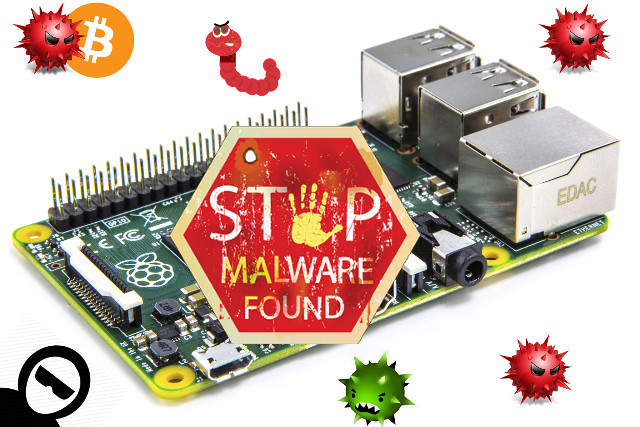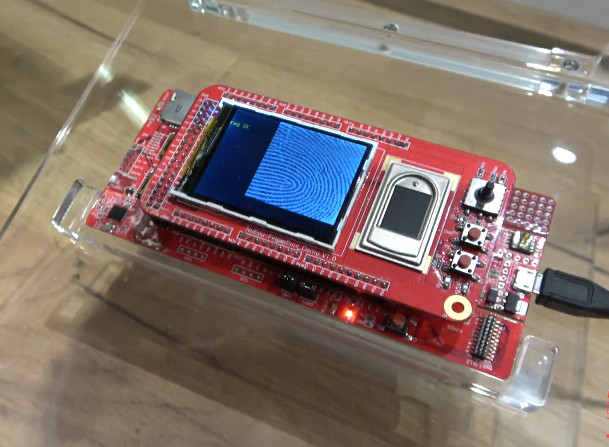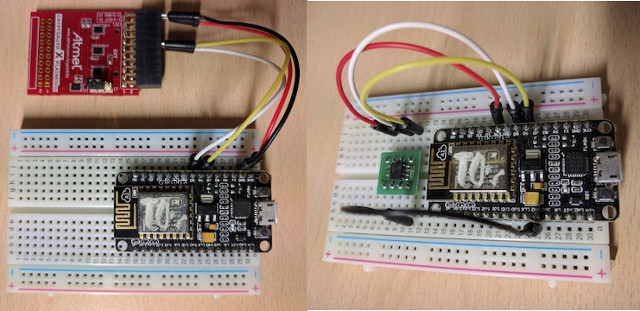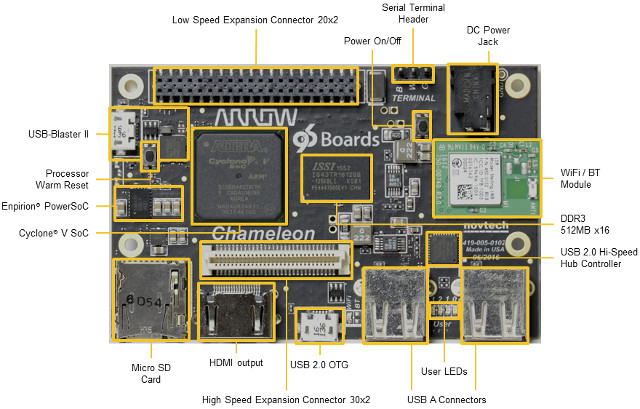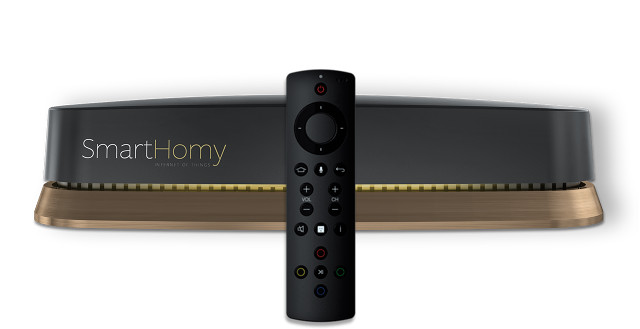Everyday we can read stories about password database hacking, malware, ransomware, and so on, and companies can try to protect themselves by paying professionals that do a more or less good jobs, but individuals can’t afford professional service, so it is harder to protect oneself. One solution is to educate yourself as much as possible, but everybody has the time and/or skills to do it, so developers have worked on FalconGate open source smart gateway that’s supposed to protect home devices against hackers, and alerts the user in case of intrusions on your home network, or devices misbehaving. FalconGate is said to be able to: Block several types of Malware based on open source blacklists Block Malware using the Tor network Detect and report potential Malware DNS requests based on VirusTotal reports Detect and report the presence of Malware executables and other components based on VirusTotal reports Detect and report […]
Xiaomi 6-in-1 WiFi & Zigbee Smart Home Kit Works with Domoticz Home Automation Software
Xiaomi “Mijia” 6-in-1 smart home (security) kit is an home automation set with a WiFi & Zigbee multi-functional gateway with RGB light and speaker, a wireless switch, a window/door sensor, a human body sensor, temperature & humidity sensor, and a smart socket. The key features of each item are as follows: Multifunctional Gateway Remote Control WiFI and Bluetooth connectivity Built-in speaker Light sensor and 18x RGB LED for notifications potentially trigerred by connected sensors: body sensor, door sensor, IP camera… Online radio support Window / Door Sensor Set Light and rings the gateway when opened or closed Away from home mode: can trigger IP camera recording Power – CR2032 cell battery that should last for 2 years Smart Wireless Switch Programmable one key switch to turn off all lights/applicance, turn on one light at night, etc… Human Body Sensor Motion sensor allowing you to control other devices through the gateway Power […]
NuMicro M2351 TrustZone Enabled ARM Cortex M23 MCU is Designed for Fingerprint Applications
ARM Cortex-M23 & M33 ARMv8-M cores were unveiled at ARM Techcon 2016 last October. They are the first MCU class cores to support TrustZone technology for better security, and one of the first micro-controllers to feature the technology is Nuvoton’s NuMicro M2351 Cortex M23 MCU designed for fingerprint applications. NuMicro M2351 MCU specifications Processor Core – ARM Cortex-M23 ARMv8-M core @ up to 48 MHz Memory – 96 KB embedded SRAM Storage – Up to 512 KB embedded flash with dual bank mode supporting OTA firmware update, 32 KB Secure Boot ROM Display IF – 8 COM x 40 SEG controller with internal charge pump for segment LCD panel Peripherals – UART, SPI, I²C, GPIOs, USB and ISO 7816-3 for smart card reader. Security features TrustZone Technology 8 Memory Protection Units (MPU) 8 Security Attribution Units (SAU) Implementation Defined Attribution Unit (IDAU) 2 KB OTP ROM with additional 1KB lock […]
Xtream-Codes IPTV Panel Review – Part 3: Updates and New Features for Version 2.4.2
This is the third part of Xtream-Codes IPTV Panel review. IPTV Panel Professional Edition is a software to build your own IPTV Server from scratch. It supports all common Streaming Protocols as an Input and it is powered by FFmpeg & nginx. If you have not done so already, you may consider reading the first two parts: Review of Xtream-Codes IPTV Panel Professional Edition – Part 1: Introduction, Initial Setup, Adding Streams… Xtream Codes IPTV Panel Review – Part 2: Movie Data Editing, Security, Resellers, Users and Pricing Management Here are the major changes since Part 2: And part of the company’s announcement of the release: Why choose IPTV Panel Pro? IPTV Panel is powered by many Open Source Tools. These are only few reasons why we believe our software is different from our competitors: Stability: Our software is powered by FFmpeg to do the Restreaming & Transcoding of your streams. […]
Secure IoT Connectivity with NodeMCU ESP8266 Board, ATECC508A Crypto Chip, Mongoose OS, and AWS IoT
There are many examples of Internet of Things projects, but more often than not the implementation is not secure, either because the device is exposed to the Internet with minimum or no security (worst case), or a gateway (hopefully) provides secure connection to the Internet, but the communication between sensor nodes and the gateway in the local network is not secure, due to memory limitation of the nodes, for example it might be challenging to implement security on ESP8266. Mongoose OS is an open source operating system for the Internet of Things developed by Cesanta working on ESP32, ESP8266, STM32, and TI CC3200, and the developers have demonstrated a secure solution with Mongoose OS running on ESP8266 connecting over a TLS connection to AWS IoT (Amazon Web Service IoT) and using TLS credentials stored in Microchip ATECC508A CryptoAuthentication Device. The addition of ATECC508 chip either using “XplainedPro extension board for […]
Arrow Chameleon96 Board To Feature Intel Altera Cyclone V SE FPGA + ARM SoC in 96Boards Form Factor
Embedded World 2017 will start in about one week, and take place in March 14 – 16 in Nuremberg, Germany, so we can expect interesting embedded news coming soon. Arrow has written a blog post with plans to announce three 96Boards at the event: Meerkat based on NXP i.MX 7Dual, Chameleon96 based on Intel/Altera Cyclone V FPGA + ARM SoC, and Systart Oxalis 96Boards EE board powered by NXP LS1020A single core ARM Cortex A53 SoC. I’ll start with Chameleon (Chameleon96) today, as it’s the first with FPGA fabric, and I could find some technical details and photos about the board. Chameleon96 board specifications: SoC – Intel PSG / Altera Cyclone V SE 5CSEBA6U19I7N with a dual core ARM Cortex A9 processor @ up to 800 MHz and FPGA fabric with 110K Logic Elements Chips, Ports and Features connected to FPGA: Integrated USB-Blaster II JTAG cable Configuration sources: SD Card, […]
Embedded Linux Conference & OpenIoT Summit 2017 Schedule
The Embedded Linux Conference 2017 and the OpenIoT Summit 2017 will take place earlier than last year, on February 20 – 23, 2017 in Portland, Oregon, USA. This will be the 12th year for ELC, where kernel & system developers, userspace developers, and product vendors meet and collaborate. The schedule has been posted on the Linux Foundation website, and whether you’re going to attend or not, it’s always informative to check out the topics. So as usual, I’ll make a virtual schedule for all 5 days. Monday, February 20 For the first day, the selection is easy, as choices are limited, and the official first day it actually on Tuesday. You can either attend a full-day paid training sessions entitled “Building A Low Powered Smart Appliance Workshop“, and the only session that day: 14:30 – 15:20 – Over-the-air (OTA) Software Updates without Downtime or Service Disruption, by Alfred Bratterud, IncludeOS […]
SmartHomy Hybrid TV Box with DTV Tuner Triples as a Game Console & Home Automation Gateway (Crowdfunding)
SmartHomy Homy Player is a TV box running Android TV that includes an ATSC, DVB-T2/C,DVB-S2, or ISDB-T tuner, is said to be powerful enough to be used as a 3D gaming platform, and serves as a security system and home automation gateway using Z-Wave, Bluetooth, WiFi and IR blaster to control your things. Homy player specifications [Updated on January 19th, 2017]: SoC – Amlogic S912 octa-core Cortex A53 processor with Mali T820MP3 GPU System Memory – 3 GB DDR3 Storage – 32 GB eMMC flash Video Output – HDMI 2.0 up to 4K @ 60Hz with HDCP 2.2, HDR, CEC Audio Output – HDMI and optical S/PDIF Video / Audio Capabilities – 10-bit 4K H.265 @ 60 fps, HD audio pass-through, Dolby Digital & DTS licenses DRM – Widevine Level 1, Microsoft PlayReader, Netflix license Digital TV Tuner – DVB-S2 (satellite), DVB-C/T/T2 (Cable/Terrestrial), ATSC, and ISDB-T Connectivity – Gigabit Ethernet, […]


